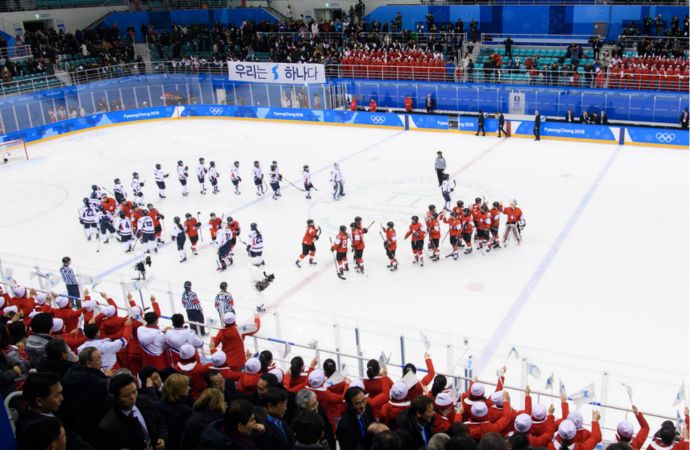The ice rinks at the PyeongChang 2018 Olympic and Paralympic Winter Games are not using natural refrigerants.

2018 Winter Olympic women’s ice hockey match played on an HFC ice rink.
Credit: Presidential Security Service and Hyoja-dong Studio
In a missed opportunity to showcase sustainable natural refrigerant-based cooling solutions, the ice rinks at the PyeongChang 2018 Olympic and Paralympic Winter Games – taking place in the South Korean county from 9-25 February – are using HFCs, according to Bloomberg Environment.
This comes despite claims from the Organizing Committee of the PyeongChang 2018 Olympic and Paralympic Winter Games (POCOG) that this is one of the greenest Olympics yet.
“To make the Games be responsible for its carbon emissions, we ultimately aim to reach 0 emission (ZERO, Zero (0) = Emission–Reduction–Offset) for emitted greenhouse gases during all of its phases through reduction and offset measures,” reads a statement posted by POCOG on the official website of PyeongChang Olympics.
Yet all the PyeongChang ice-skating and hockey venues are using R404A, an HFC blend with a global warming potential of 3,922, according to Bloomberg Environment.
Environmentally friendly natural refrigerants like ammonia, and increasingly CO2, have been used in ice rinks in Europe, Asia and North America.
Ammonia has a long history of use in ice rinks, while CO2 was first used in an ice rink in 1999 – in an ammonia cascade system in Austria. The first ammonia ice rink was installed in New York back in the 1870s.
In Sweden, for example, ammonia systems dominate the ice rink sector thanks to their impressive energy efficiency. 85% of them use the natural refrigerant, with the remainder using R404A, R134a or other hydrofluorocarbon (HFC) refrigerants. With HFCs currently being phased down in Europe under the EU’s F-Gas Regulation, manufacturers of CO2 technology are targeting the ice rink sector too.
Towards a greener Games in 2022?
South Korea is a signatory of the Kigali Amendment to the Montreal Protocol that calls for the phase down of HFCs globally. China, another signatory, plans to installer greener rinks at the Beijing 2022 Winter Olympics with the help of Chinese real estate developer Vanke, Finnish refrigeration company Huurre and building technology designer Granlund.
“Due to Vanke’s deep-rooted commitment to environmentally sound operations, we welcome Huurre’s expertise in the green fully digitalised and automated CO2 refrigeration technology and Granlund’s experience in environmentally solid building technology design,” said Shawn Liu, SVP of China Vanke Co., Ltd. in a press release.
“Huurre highly respects China’s commitment to the reduction of harmful emissions, and sees cooperation with Vanke and Granlund as the best way to advance this positive development,” said JT Bergqvist, chairman and CEO of Huurre.
Given Huure’s decision to highlight its work with CO2 technology in its press release, then assuming that design and installation proceed as planned, it seems likely that this collaboration will produce one of the first CO2 ice rink installations in China.
China is planning to make the Beijing 2022 Winter Olympics one of the greenest Games in history.
“Co-operation with Vanke and Huurre will open Granlund new important opportunities to contribute to the environmentally solid design of the energy-intense ice rink building,” said Pekka Metsi, CEO and partner at Granlund Oy.
Related stories



